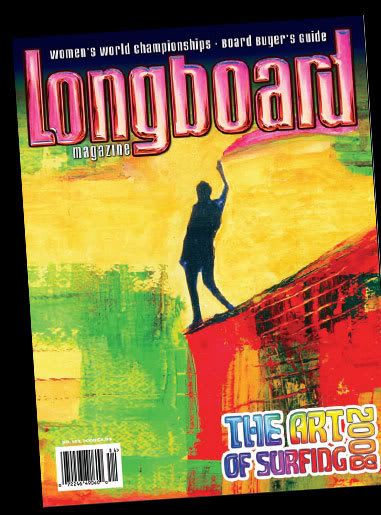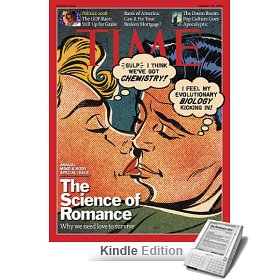When lifelong surfer and Costa Mesa, California native Chasen Marshall isn't catching waves, he's writing about them and capturing their beauty in a snap. The 25-year-old lover of writing, reading, cooking, soccer and traveling has turned his admiration for surfing into a career at
Longboard magazine. Now the Managing Editor, Chasen is living the dream. When he's not fantasizing about the small fishing villages of Cinque Italy or enjoying a relaxing camping trip with his buddies, he's acting out his deepest devotions and getting paid for them. Life isn't so bad for Chasen Marshall.
 Jackie Thunem
Jackie Thunem: How did you end up in journalism?
Chasen Marshall: Well, I really disliked english in high school, but I loved to read. I read a ton of books and always was reading the sports page of the
Los Angeles Times, so I think that kind of set in the back of my mind an interest in journalism. During my senior year, my advisor on the newspaper staff made the comment that I should consider a career in writing/reporting and it's kind of grown from there.
JT: How did you land a spot at Longboard? Was it a who ya know or what ya know kind of deal?
CM: Actually I just started as an intern. My advisor in college was always announcing internship opportunities that were sent her way, and one that she announced was for LBM, so I contacted them. I worked as an intern the summer before my senior year of college, went back to school and then they hired me full-time after I graduated. From there I've just worked my way up the hierarchy and now I'm currently working as the magazines Managing Editor.
JT: Do you feel you are based in the best place for the sake of the magazine or would you prefer to be somewhere else?
CM: The magazine office is located in San Clemente, CA, which is pretty much right in the middle of a hotbed for surfing. A number of other big surf magazines are in the area as well like
SURFER and
Surfer's Journal so it would seem we're wise in staying around. Being right in the middle of San Diego and Los Angeles, it allows us the opportunity to cover a wide range of breaks and top surfers.
JT: What is a normal day of work like?
CM: I've been doing a lot of photography for the magazine over the past year or so. So a number of my mornings are spent on the sand documenting some of the best longboarders in the world. Once I grab a cup of coffee and get to the office, I'll usually make a few calls and return a few emails until the remainder of the editorial staff gets in. We'll usually chit-chat a bit about where the production is on the current issue, pass around copy for editing and work on pieces as well. It's a small staff, so everyone is involved with most every level of production, from writing, to editing to occasionally a little design. Maybe there will be a meeting with the advertising department, but usually every day is pretty different.
 JT
JT: Let's talk about Longboard magazine, what is the focus and message the magazine is putting out there?
CM: We try to serve as a voice and vehicle for the sport of longboarding. Trends, contests, profiles, gear, travel destinations, history — it's all a part of the product we try to produce.
JT: What age demographic are you trying to reach? And who is your reader?
CM: Well, our reader's coverage a pretty large age range, typically from 15-55, give or take. Our average reader is probably in the 25-35 range. The magazine is distributed worldwide, with the majority of distribution on the East and West Coast of the U.S., along withHawaii and Australia.
JT: Would you say circulation is increasing or decreasing?
CM: I would assume circulation is decreasing, which is a trend that seems to be common throughout the publishing industry. As more and more people are becoming comfortable with surfing the web, they realize they can find their news and entertainment in a more timely manner on the web. On that note, our circulation hasn't had any drastic changes.
JT: I'm noticing a major online shift in the magazine industry, do you have plans to go that route?
CM: The magazine has a website, but the common theme on there seems to be "Coming Soon." So, yeah, it's there, but it needs a lot of work. I would agree that the web presence is huge for magazines, and in that realm we are heavily behind the curve. I would like to believe that the magazine will try to make further strides in that medium.
JT: So you're the managing editor and I heard you shoot the surfers as well. How does that work for you?
CM: I really enjoy having that added element with my job. Not that I didn't enjoy what I was previously doing, but it's something that is new to me. New and exciting. It's fun to see myself make progress, come up with a few good photos for the magazine and see my name in photo credits in other magazines when I sell a photo (not that many to date). It has definitely helped with my relationship with the surfers, since having photos in the magazine is much more important to them than having their name in print. It also allows me to spend more time with the men and women involved with the sport, and as I see and talk to them more and more, it does occasionally lead to story ideas and good contacts. Plus it saves the magazine money when we aren't having to buy every photo.
JT: I'm aware that there are two types of longboarding; traditional and progressive. What do you think the future of longboarding will be?
CM: I think it should and will be a blend of the two. Unfortunately the two schools have hurt the sport because in a competitive arena, it's difficult to measure one against the other. So a number of top competitors have stepped away due to frustrations in the contest scene. There is no one true identity in performance, which isn't necessarily a bad thing, but it diversifies the sport and makes it difficult to market, which has an effect on whether or not the surfers can make a career out the gig. But I can also see the sport going mainly high-performance/progressive in contests/judging criteria, and the traditional surfers becoming more of the photo/freesurf/lifestyle-type guys, who don't make contests and such their main priority.



























 subtle differences on each cover. The bean sprout reminds onlookers of biology class, an image consistent with NG’s reporting approach and focus on science. 7x7’s arrangement of vegetables and large letters: “Eat + Drink” add a human connection and give the impression of cooking and dining.
subtle differences on each cover. The bean sprout reminds onlookers of biology class, an image consistent with NG’s reporting approach and focus on science. 7x7’s arrangement of vegetables and large letters: “Eat + Drink” add a human connection and give the impression of cooking and dining.